Tabu i wstyd w literaturze i kulturze (Barbara Wolska, Marek Pąkciński)
Seria rocznika przygotowanego pod hasłem Tabu i wstyd nawiązuje do poprzedniego tomu pisma poświęconego tematowi Jawne i ukryte w literaturze i kulturze. Zeszyt ten stanowi próbę ukazania problemu ukrywania „nagiej” rzeczywistości oraz sposobów i konsekwencji ujawniania prawdy o niej. Pozwoliło to na zgromadzenie wielu możliwych interpretacji pojęć „tabu” i „wstydu” wypracowanych w interakcjach z tekstami kultury pochodzącymi, jak zwykle w przypadku „Napisu”, z różnych epok – od średniowiecza po postmodernizm. Jest to także swoista analiza skomplikowanych związków i wzajemnych wpływów między tymi pojęciami.
Artykuły koncentrują się m.in. wokół następujących kwestii: pojęć „tabu” i „wstydu” rozpatrywanych przez pryzmat ciała i płci (w poezji Jana Kochanowskiego, w dawnym liście miłosnym, w wierszach swawolnych polskiego Oświecenia – zwłaszcza w poematach Adama Naruszewicza, ale także w utworach obscenicznych Stanisława Trembeckiego – a nawet w tekstach totalitarnych reżimu komunistycznego). Kategorie te analizowane są również w kontekście rodziny (na przykładzie powieści XIX-wiecznych i przekazu wspomnieniowego z epoki, poruszających problem tabu małżeńskiego i narzeczeńskiego), a także granic akceptacji relacji seksualnych (ukazanie sposobu radzenia sobie z traumą homoseksualizmu i obalanie tabu we współczesnym komiksie). Poruszone zostały również tematy roli wstydu i niedopowiedzenia w interpretacji biografii i twórczości wybranych artystów (np. scophofobia – lęk przed cudzym spojrzeniem – Bolesława Leśmiana, tabu codzienności Witkacego) oraz ich próby wymknięcia się spod ubezwłasnowolniającej jednostkę kontroli, a nawet wypracowania strategii oporu, jak również tabu rozpatrywanego w kategoriach religijnych, społecznych i artystycznych. Mowa tu o kwestiach cenzury i autocenzury, ich wpływu na kształt dzieła literackiego, gatunkowych wyznacznikach „tabuizacji” przekazu (np. przekraczanie granic w dyskursie publicystycznym na przykładzie Kronik Bolesława Prusa).
Niewątpliwym uatrakcyjnieniem serii jest dział Varia tym razem w formie kolorowej wkładki, prezentującej najlepsze prace studentów Akademii Sztuk Pięknych w Warszawie, wyłonione w konkursie fotograficznym pod tym samym tytułem. Konkurs Tabu i wstyd został zorganizowany przez profesora Rosława Szaybo i dr Katarzynę Stanny z Pracowni Fotografii Użytkowej na Wydziale Sztuki Mediów i Scenografii ASP.
Część tomu zatytułowana Recenzje, omówienia, sprawozdania zawiera recenzję dwóch książek – Grażyny Legutko Niespokojny płomień. O życiu i twórczości Gustawa Daniłowskiego (Kielce 2011) oraz opracowania zbiorowego oświeceniowych utworów okolicznościowych Wiersze imieninowe poetów z drugiej połowy XVIII wieku (Warszawa 2011), a także sprawozdanie z wydarzeń naukowo-kulturalnych 2012 r., który ogłoszony był przez UNESCO rokiem Bolesława Prusa.
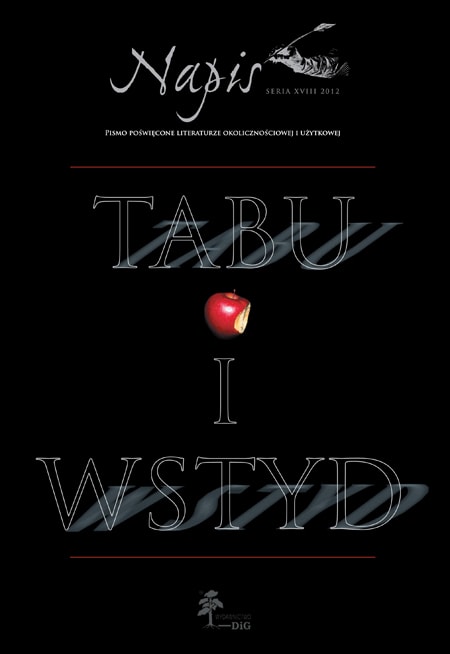
Tabu i wstyd w literaturze i kulturze (Barbara Wolska, Marek Pąkciński)
Teresa BANAŚ-KORNIAK
„Aż się za cię wstydzę, gdy cię w tańcu widzę”. O kobiecości i wstydzie w poezji Jana Kochanowskiego (na wybranych przykładach)
Artykuł (PDF) Show abstract Hide abstract
The aim of this article is to examine how the concept of “shame” functions in the works of Jan Kochanowski, in particular the relationship between woman’s nature, specifically understood by the Renaissance poet, and shyness. Both dictionary sources and contexts of Kochanowski’s poetry certify that the concept of “shame” was not clearly understood in the old Polish language: it had positive and also pejorative meanings. Shame conceived as an attribute of mind meant the same as modesty, prudence, a sense of dignity, or “the fear of infamy”. In the praising love poems, written in honour of women, and in the didactic works (such as Dziewosłąb) “shyness” (sometimes also indicated by an adjective “shy” in reference to a man or a woman, or by a noun “shame”) is regarded as the greatest — next to the virtue — advantage of woman. Its absence, however, especially in older and mature women, is a serious flaw of personality. Shame, understood not as a human trait but as a feeling, has indeed a negative sense in Kochanowski’s poems (marked by the old forms of the verb “to be ashamed” in his poetry from Czarnolas). This verb usually signalled distress of the lyrical subject and psychological pain (for instance in the erotic poems about unhappy love), disgust, or a sense of aversion (for example caused by an improper behaviour of mature women).
Iwona MACIEJEWSKA
Erotyka jako temat wyznań w barokowym liście miłosnym. Próby przełamywania tabu
Artykuł (PDF) Show abstract Hide abstract
The article relates to how the issues of erotic needs and experiences were raised in Baroque love letters, before and after the marriage. The analysed source material, created both by women and men, shows to which extent former lovers were willing to break a taboo and directly express not only their spiritual longing, resulting from a distance, but also the physical, motivated sexually, in the text theoretically considered as a completely private and devoted only to a partner. In the considerations the letters of the rich nobility representatives (Jan Sobieski, Franciszka Urszula Radziwiłłowa, Magdalena Radzwiłłowa from Czapski’s family), and of the impoverished nobility members (Teresa and Kazimierz Wiśnicki) were included. The text attempts to answer in what way environment, readings, social status, and personality traits may influ ence the tendency to break taboos in the field of erotica or vice versa, to decide on its conservation. The analysis presents as well, what methods were used by pen–friends to express some embarrassing content.
Szymon Piotr DĄBROWSKI
Zjawisko sodomii w polskiej poezji XVIII wieku. Wstępne rozpoznanie problemu
Artykuł (PDF) Show abstract Hide abstract
The ways of understanding the phenomenon of sodomy by Enlightenment love poetry authors is the subject for reflection in the article. The first part is concentrated on the frequency and comprehension of toponyms “Sodom” and “Gomorrah” in the studied texts, as well as the word “sodomy” and words derived. Due to the fact that in European culture this term often occurred as descriptive for homosexual behaviour, in the second part of the study all the allusions and presentations of a homoerotic character in reference to differences in the perception of the sphere of human sexuality in the 18th century and today have also been traced. This dissertation contains also a range of detailed rapprochements of analysed poems, including the famous Oda Pirona do Priapa by Stanisław Trembecki and not less obscene work, differently named by researchers — Burdel, Pochwała bordelu, Pieśń weselna by Stanisław Kostka Potocki. The analysis of selected texts brings closer the repertoire, imaging methods and aim of presenting sexual behaviour in the texts from the period in the context of reflection on some aspects of Enlightenment morality — the time of enormous mental transformation inspired by libertine tendencies, among others, which were also present in the native poetry.
Barbara WOLSKA
Bez winy i wstydu. Seksualność w polskiej poezji obscenicznej o tematyce erotycznej doby Oświecenia
Artykuł (PDF) Show abstract Hide abstract
The article is devoted to the strategies used in Polish playful poems, adapted from French and Italian literature (Boccaccio, Ariosto, La Fontaine) for the witty, pleasant in perception performance of sexual vitality of men and women. Those works revealed current manifestations and mechanisms of sexual morality of people of different status, condition, age and gender, not excluding secular clergy, monks and nuns of various orders (“hoods, hairshirts, cassocks, scapulars”). The following issues has been analysed: numerous metaphorical approaches derived from different layers of literary tradition and folklore, and the author’s of these poems creativity, an interesting plot and moral realities (Polish: “medieval” royal court, Sarmatian province; or Italian), a theme of travel rich in erotic adventures, avoiding obscene words, and above all, witty, humorous perspective (in the narrative and linguistic content) to sensitive, from the point of view of morality, taboo issues (like: sexuality — in general, erotic desire as a natural need; young people’s interest in eroticism, sexual performance and its sources; adultery not only in case of marriages unequal regarding the age; lifestyle of clerics seducing married women and hypocrisy; promiscuity at courts and in orders, etc.). All those factors constrain the poems (Słowik, Czyściec, Pielgrzym, Hilary), attributed to Adam Naruszewicz, a Jesuit and a diocesan bishop, entertaining not only a group of writers on Thursday dinners, organised at the court of the King Stanislaw August, but also contributed to a great readership in the manuscripts’ circulation, what is certified by noble sylwy. The taboo was disarmed by laughter and emphasising the universality of sexual behaviours, officially hidden, and maybe also by a caricaturing–grotesque image of erotic struggles at times. Reading was probably accompanied by laughter, amusement, which accompany us today, too. In the analysis of the above mentioned scenes of sexual problems, the examined texts can also be situated within the erotic literature, briefly referred to heterogeneous, diverse criteria used for identifying the types, including: the realm of language, another time the themes (the so–called dominant topic or “erotic portions”), ethical and moral meaning of sexual contents contained in the works, their functions carried out in the reception of texts, as well as the aim of the authors (the mocking, acceptance, and fun).
Zbigniew CHOJNOWSKI
W mazurskiej gęstwienie znaków i powinności. Uwagi o opowieści Marcina Gerssa „Jest Bóg!”
Artykuł (PDF) Show abstract Hide abstract
Macin Gerss’s epic text “Jest Bóg!” is one of the first Mazurian stories written in prose (published in episodes in the “Gazeta Lecka” [‘Lecka Newspaper’] in 1875). The story on the surface layer indicates the cruel consequences of abolishing certain prohibitions; it is based on simplifications and non–negotiable messages. The narration is formed by the necessity to recognize Christian sacrum, which reveals the tabooed sphere in the Prussian Mazurian culture of the 19th century. What is said is regulated by religious, ethical, local, social, and historically–political taboos. The author in fact counted on the folk target audience, that had to be “enlightened” and distracted from bad beliefs — he was writing in accordance with Lutheranism and regional, religious, historical and geographical identity of Mazurian people, but above all with the Prussian–German raison d’état. Gerss’s tale is therefore an example of the text, in which the taboo is consolidating the power.
Agnieszka BĄBEL
Sztuka zrywania. Niefortunne narzeczeństwa w polskiej powieści i wspomnieniach końca XIX i początku XX w.
Artykuł (PDF) Show abstract Hide abstract
The article is devoted to a morally sensitive topic, created by situations which did not lead to a marriage, but ended up with a discrediting separation.
It analyses socially accepted, although often false reasons for splitting up, treated as shameful and without approbation, frequently hidden under suggested excuses provided by savoir–vivre books. It also compares, in this case, the position of women and men, reflecting on the attempt to protect the reputation of a young lady with a fixed social convention. Particularly interesting seem to be the texts that refer to authentic biographical material, which were read by the contemporary readers as the violating moral taboos “novel with a key”.
Novels of manners are the basis for reflection, such as created by Bolesław Prus (The Doll [Lalka], The New Woman [Emancypantki]), Maria Rodziewiczówna (Między ustami a brzegiem pucharu, Kądziel), Henryk Sienkiewicz (Without Dogma [Bez dogmatu], Rodzina Połanieckich), Sewer (Bajecznie kolorowa), and Kazimierz Przerwa–Tetmajer (Anioł śmierci), but also a message of memoirs of the age (Anna Skarbek–Sokołowska, Magdalena Samozwaniec, Tadeusz Boy–Żeleński, and others).
Tadeusz BUDREWICZ
Zasada „3P” – o czym myślą rodziny w powieści pozytywizmu
Artykuł (PDF) Show abstract Hide abstract
The article raises the problem of avoiding certain topics in family conversations, which images were written by Polish novel of the second half of the 19th century. Documentary materials were taken from the works of the following authors: Stanisław Grudziński, Natalia Korwin–Szymanowska, Waleria Marrené–Morzkowska, Eliza Orzeszkowa, Bolesław Prus, and Henryk Sienkiewicz. Among there are very acknowledged authors as well as the secondary and forgotten. Due to such selection of sources, the phenomenon described in the article can be considered as an objective state of affairs.
The nineteenth century novel was subjected to rigours of censorship, forcing authors to cipher (Aesop’s speech). The author proves that more important in the regulation of the topics of conversation was a moral taboo, which excluded speaking on some of them. The article justifies a thesis that it hindered dialogues within the family circle. This concerned mainly three areas: politics, money, and sexes (3P in Polish). These areas of social life were dependent on legal regulations, which treated preferentially men. The absence of these topics in the conversations proves that the marriage did not have the democratic status of a partnership.
Anna Małgorzata PYCKA
Przekraczanie granic w dyskursie publicystycznym Bolesława Prusa
Artykuł (PDF) Show abstract Hide abstract
Bolesław Prus had been writing Kroniki to many Warsaw newspapers for 37 years. In the paper fragments of texts published in “Kurier Warszawski” in 1879 (it is the time of a novel The Doll [Lalka] setting) were selected and interpreted. The text shows the writer’s — a journalist’s and a keen observer’s — thoughts on the social situation of the inhabitants of Warsaw: their interests, behaviours, daily problems, and everyday matters. The interventionist nature of Prus’s journalism demonstrates the increasing role of the press in presenting sensitive issues, which has long remained a taboo in Polish literature.
The comments placed in Kroniki on the work of journalists and writers lead to the conclusion that Prus–the editor lives an everyday life of Warsaw, marvels at her or criticises her sharply; as the author of a realist novel, he uses current events to illustrate processes that express his concern.
Bartłomiej SZLESZYŃSKI
Bolesław Prus i pozytywistyczne „porno z Murzynkami”
Artykuł (PDF) Show abstract Hide abstract
The article begins with stating a fact that in Bolesław Prus’s Kroniki there are many fragments (especially those, in which black women occur), which sound so obscene that, according to contemporary standards, they could be considered pornographic. This lead to a conclusion that the conviction about an absolute prudery of the contemporary official circles and a current image of Bolesław Prus has to be modified. The next part of the article is devoted to an attempt to find the reasons why exactly this topic of African women provoked the author of Kroniki to come up with erotic fantasies (one of them was a belief in the moral inferiority of African inhabitants widespread in the 19th century), and also to more detailed analysis of the most characteristic fragments of Kroniki containing all these fantasies (embedding the image of women, created by its author, in the context of other colonial narratives).
Anna LEWENSTAM
„My nie jesteśmy: ty i ja. My jesteśmy czegoś katastrofalną tylko konsekwencją”. Maria Jehanne Wielopolska pisze historię kobiet
Artykuł (PDF) Show abstract Hide abstract
Virginia Woolf said in 1927 that women should finally write the history from the beginning, because this one already written is seen from the male perspective and, in fact, is the history of men. In such history there is no space for women. In the later feminist research even a deconstruction of the very word history — understood as his — story (his history/story) — was proposed, and a replacement by a word herstory (her history/story).
The article deals with the history written, as if, from scratch, which gives voice to the mute participants of events. Therefore, women are made the foreground figures of history. The text refers to contemporary feminist researchers, undertaking the problem of female historiography, such as Joan Kelly, Joan W. Scott, Natalie Zemon Davis, or Ewa Domańska.
The protagonist of these considerations will be Maria Wielopolska, a writer working in the late of the 19th and 20th centuries, whose reflections about women and their place in the world turn out to be very modern. Breaking with conventions of writing history in which a key role is played by men, Wielopolska shows women who have an impact on the course of history, but also, and perhaps above all, on the fate of the men presented in the background of a great history. The author in her texts depicts domineering women, with strong characters, who can be just as dangerous, violent and torn by passions, like men. Her heroines are very often determined and ready to fight for what is their own at all costs: “patrycyuszki zwodne, renesansowe duchessy, […] dusze jagnięce, białoruniste i krogulcze” [‘tricky noblewomen, Reneissance duchesses, […] the soul of lambs, white fleeced, and hawked’] — as the author calls them. There are no embarrassing issues for Wielopolska — women’s body, sexuality, brutality of men, unwanted marriage, duplicity of the secular and ecclesiastical authorities, political games — these are the problems that are touched by the author, totally ignoring public criticism, as well as social and cultural taboo.
The aim of the article will be to present the work of this very modern and brave writer with a focus on a specific philosophy of history, which she managed to create in the works devoted to women and their history.
Izabela PONIATOWSKA
Płcią opętani, gębą splątani”. Tabu w powieści popularnej na przykładzie utworów Tadeusza Dołęgi-Mostowicza („Bracia Dalcz i S-ka”) i Witolda Gombrowicza („Opętani”)
Artykuł (PDF) Show abstract Hide abstract
The text discusses the suitability of the taboo category in the study of popular literature, in which it is a part of the collective experience of some community and, at the same time, an important cultural category. It is also one of the most common topics of this kind of literature, allowing to refer to the reader’s experience. The category of the taboo shows also how important in the study on “that third” is an emotional sphere, and how it can be dangerous from the point of view of the researcher (which can be observed mainly in a not very careful use of discourses very much result–oriented in research to interpret). Applying the taboo category can be helpful in the description of the text’s axiology, too.
The category of the taboo in popular literature is described by comparing Bracia Dalcz i S–ka by Tadeusz Dołęga–Mostowicz and Opętani by Witold Gombrowicz. Both these texts are linked by the method of using the categories of the taboo and the shame. The shame in the analysed novels, which is symptomatic, is a disappearing category: the characters are not ashamed of their actions but they are hiding them, and this can become a driving force of the action. Breaking the taboo in the popular novel is also associated with the search for identity, which can be observed on the example of Mostowicz’s work heroine who is forced, for reasons of inheritance, to live in a male disguise.
The category of the taboo in popular literature of the inter–war period documents as well, the shift from the didactic function of the texts that belong to “that third” to the entertainment one. An interesting procedure of Bracia Dalcz i S–ka is obliterating the memory of the taboo, the existence of which could make it difficult for recipients to identify with the main characters of the text. The study of this phenomenon in popular literature proves also that the popular novel of the first half of the twentieth century, despite the postulated bravery or even scandalous content, in fact remains a medium for conservative world view, at least in Polish conditions.
Tomasz BOCHEŃSKI
Dwa teatry Witkacego
Artykuł (PDF) Show abstract Hide abstract
Witkacy disapproved talking about “guts”, that means about tri vial feelings, banal experiences, and boring trivial matters of everyday life. The artist had a tragicomic fight with trivial corporeality to preserve some rudiments of spirituality. He understood this fight as opposing to the age that begins to speak only in the materialistic register. Phi losophy, art, and everyday life rules generally served the artist as protecting means from the inter–war chaos of reality. Therefore Witkacy defended his own idealized theatre of strangeness of existence before the theatre of banality of existence.
Basing on the letters to his wife, we can claim that despite the fight against triviality, more and more place in Witkacy actions is taken by the theatre of banality. Before his wife and selected spectators Witkacy stages a scatological, and an exhibitionist theatre of the artist attacked by everydayness. He confronts his “performances” with life theatre of other people, writing his letters on the back of cards received from others and remaking foreign correspondence. Rewriting letters, ritualizing daily activities, an obsessive control of bodily sensations, a system of symbols describing the effect of stimulants, a controlled hypochondria, or even medical prescriptions were used by the artist to creative processing of boring everydayness. Witkacy was ashamed of the disorganised body and he did not rest in his efforts to organise it. His exposures require a sensitive spectator, who will see the body art in revealed intimacy.
Anna SOBIESKA
Scopophobia (lęk przed spojrzeniem) i marzenia i bezwstydzie – Leśmianowska fenomenologia wstydu
Artykuł (PDF) Show abstract Hide abstract
In this paper, on the material of Bolesław Leśmian’s poetic texts, the phenomenon of a fearful feeling of being watched by someone/something is analysed.
This phenomenon is known as scopophobia, related to Medusa complex or Truman syndrome, which is a way by Poet to disclose a horror due to a sense of being trapped by Being? Nothingness? Absolute? A mysterious Spectator? An ancient fright that we are just damselflies in someone’s follicle; sometimes a paranoid fear of surveillance, of being manipulated.
He is close in his assessments to Foucault’s consciousness expressed by the equation: visibility is a trap.
However, Leśmian’s scopophobia as a denial of one’s reflection in the eye — it’s also a suicide, choice of death, nothingness, a non–existence. It is an attempt of the Poet to escape from incapacitation of control over an individual, a strategy of resistance chosen by Leśmian’s queers, who would otherwise be affected by aggression, or exclusion.
Kamila BUDROWSKA
Cenzura, tabu i wstyd. Cenzura obyczajowa w PRL-u (1948-1958)
Artykuł (PDF) Show abstract Hide abstract
The article analyses the relationship between the concepts: “censorship”, “taboo” and “shame” on the material taken from the reading of censorship reports from the years 1948–1958.
It can be assumed that: 1. censorship is an external control established by governmental or religious institutions; 2. taboo is a prohibition imposed by external bodies (mostly religious), but externalised by the subject; 3. shame is an emotion preventing from something considered inappropriate — the level of internalisation seems very deep here, the subject may not even be aware of the imposition of this condition by external institutions.
Both quite subtle differences between the concepts (especially between “taboo” and “shame”) and common places — realisations during which the “launch” of censorship, taboo, and shame is simultaneously activated — appear interestingly. An example might be here taken from the moral censorship, where imposed by culture, imbued and accepted sense of what indecent is, has an influence on the legal regulations and the state control practice.
Marek PĄKCIŃSKI
Ciało, płeć i wstyd komunisty (na marginesie fantastycznonaukowych powieści utopijnych Stanisława Lema z lat pięćdziesiątych XX w.)
Artykuł (PDF) Show abstract Hide abstract
This article is an attempt to answer the question: what causes prompted the authors of utopian science fiction novels, that appeared during the communist period (mainly in the fifties of the twentieth century) in Poland and the Soviet Union, to adopt a particular convention of presenting the human body, and especially — the woman’s body? The analysis of these works (The Astronauts [Astronauci] and Obłok Magellana novels by Stanislaw Lem and Yvan Yefremov’s Andromeda: A Space–Age Tale) is carried out in a dialogue with the concepts of Jacques Lacan and Slavoj Žižek, as well as Judith Butler or contemporary sociologists (Chris Shilling), regarding body image and an idealistic element contained in the Marxist–Leninist ideology, which is the theoretical basis of the utopian vision of a society of the future. Psychoanalytic and deconstructive reading of Lem’s and Yefremov’s texts lead the author of this article to the conclusion that the image of the female body (and therefore, of inseparable from human sexuality of shame) undergoes here a sort of “politicization” in relation to a vision of capitalism as a “dark vortex” of life governed by drives, mediated falsely by logos. However, the image of femininity and sexuality, included in the novels, refer to the early Gnostic version of Christianity (among others to opinions by Marcion, Valentinus, the Syrian’s “encratites”), raising hope to transform body by eliminating areas of drives, but the place of the Gnostic “salvation of the soul” in the communist utopias is occupied by the progress, understood as an increase in knowledge and an achievement of the ideal of the ultimate end of human history through a union with nature.
Marek PACUKIEWICZ
Między wstydem a bezwstydem – kulturowy eksperyment Salmana Rushdiego
Artykuł (PDF) Show abstract Hide abstract
Shame is a cultural element that is characterised both by a high degree of invariantability, as well as by historical variation. The crucial, and contextual cultural patterns are built around shame; we even speak of the typology of cultures based on this concept. The main function of shame is a control function aimed at conserving cultural norms, both in terms of corporeality, behaviours, and also ideas; therefore, it operates in culture both in the verbal and the proxemic space.
In the novel Shame, Salman Rushdie, considering a cultural identity problem in the post– colonial world, confronts with each other the characters extremely shameful and shameless. Thanks to that experiment, the author reflects on durability of a complex understanding of cultural tradition.
The purpose of this article is to analyse cultural forms of shame expressed in the literary work on the basis of some research suggestions from the field of anthropology of literature. This perspective should enable reflection on the contemporary vision of a universal and contextual dimension of culture outside the framework of post–colonial criticism.
Kamila TUSZYŃSKA
Lesbijka, córka geja. Homoseksualizm – tabu – autonarracja w powieści graficznej „Fun Home. Tragikomiks rodzinny” Alison Bechdel
Artykuł (PDF) Show abstract Hide abstract
Autonarration in “Fun Home: A Family Tragicomic” by Alison Bechdel, is analyzed as an artistic therapy, as a method of dealing with the trauma of homosexuality.
The narration is seen as the most important category of ordering human life: thanks to it the individual is able to build her identity, to understand herself and others. The same story is told from a different perspective and it makes reinterpretation of events.
The purpose of constructing autonarration is to understand the past, to deal with a problem, get rid of a trauma or to break a taboo. This kind of autonarration can arise not only during therapy session with a specialist, but also in the autobiographical texts.
In Alison Bechdel’s comics breaking the taboo is also shown by embedding autonarration in the context of literary works (Wilde, Proust, Colette) and psychological works (Hermans, Ricouer).
Tabu i wstyd – prace studentów ASP w Warszawie
Komentarze autorów do fotografii
Grażyna Legutko, Niespokojny płomień. Życie i twórczość Gustawa Daniłowskiego, Kielce 2011 (Wojciech Kaliszewski)
Wiersze imieninowe poetów z drugiej połowy XVIII wieku, wstęp, wybór tekstów i opracowanie Barbara Wolska, Bożena Mazurkowa, Tomasz Chachulski, Warszawa 2011 (Jacek Wójcicki)
2012 – Rok Bolesława Prusa. Sprawozdanie (Pracownia Literatury II Połowy XIX Wieku)

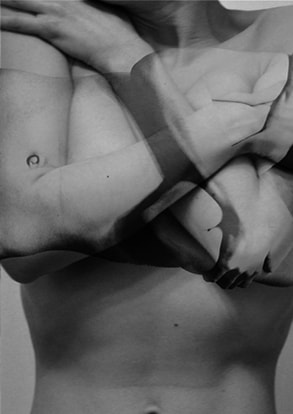

Magdalena Mazurczak
Tabu to także choroby psychiczne i walka, jaką musi z nimi stoczyć chory. Na mojej fotografii zamknięcie w sobie ukazane jest poprzez gest. Druga kompozycja to moja interpretacja tabu, jakim były kiedyś obozy zagłady, kontrastujące ze wstydem i krwią, która pozostała na rękach oprawców.

Monika Ney
Moja fotografia odnosi się bezpośrednio do kobiecej seksualności, która w dzisiejszych czasach jest niewątpliwie bardziej eksponowana. Nagość — ta subtelnie przedstawiona i ta odważna, prowokująca — zawsze wzbudza „nieśmiałe” zainteresowanie. Nie jest oczywista, namacalna. Jest „owocem zakazanym”, po który sięgamy w ukryciu.
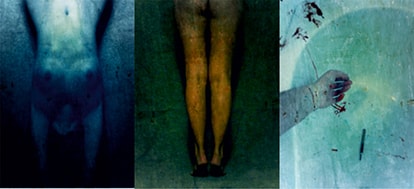
Monika Woźniak
Punktem wyjścia do serii zdjęć, będących odpowiedzią na temat „Tabu i wstyd”, było ludzkie ciało. Ciało, będące przedmiotem cierpień i krzywd, często zadawanych przez nas samych. Pomimo coraz większej tolerancji i otwartości otoczenia, problemy nieakceptowania ciała, samookaleczenia są obecne w społeczeństwie, jednak głośno się o nich nie mówi, wciąż jest to temat tabu i powód do wstydu.
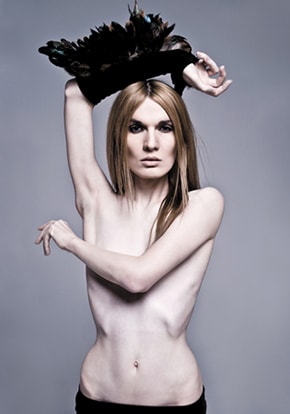

Anna Skura
Cykl fotografii zatytułowanych „She or He?” przedstawia balansowanie pomiędzy płciami. Pokazują one, że nasza pierwsza identyfikacja płciowa często może być mylna. Zatarcie granic nierzadko nie daje oczywistej odpowiedzi, czy to ona, czy on? Jest to zapewne złamaniem pewnego przyjętego „tabu”, ale czy jest także powodem do wstydu?


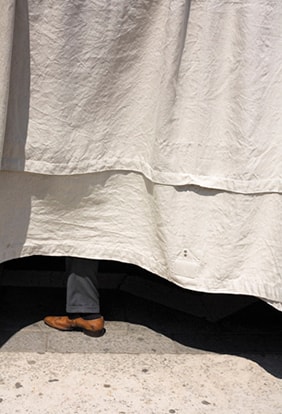

Iza Maciusowicz
Każdy z nas posiada małe tajemnice, których się wstydzi, o których nie chce rozmawiać. A jeśli ktoś je odkryje? Wstyd potrafi być paraliżujący. Przekonanie o własnej małej wartości nie pozwala żyć w pełni, przez co pozostajemy bezustannie w cieniu.

Ewa Iwaniuk
Moja fotografia przedstawia problem osoby, która ukrywa się przed światem, za wszelką cenę usiłuje być niewidoczna dla otoczenia. Jest to kobieta z brakiem samoakceptacji i pewności siebie, mająca opory przed odsłonięciem swojego wizerunku pomimo tego, że jej wstyd jest całkowicie bezzasadny.
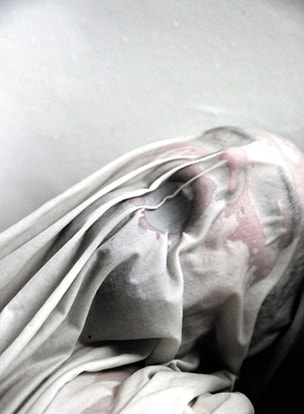
Ewelina Dziekońska
Tabu i wstyd w moim osobistym odczuciu kojarzą się z erotyzmem i śmiercią. Pokazywaniem ukrytych miejsc na mapie ciała, skrywanych emocji na ludzkich twarzach i wewnętrznego rozdarcia w cierpiących umysłach.
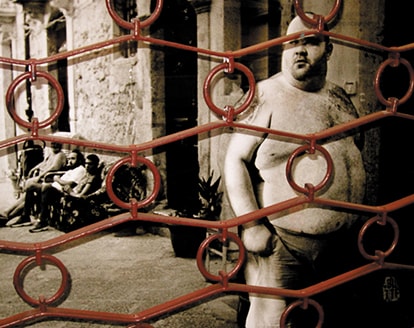
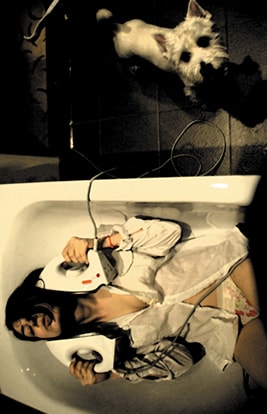
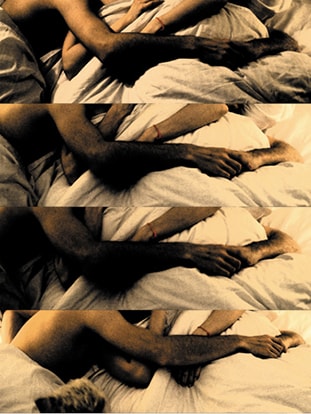
Elena Leszczyńska
Wstydem jest być nieszczęśliwym.
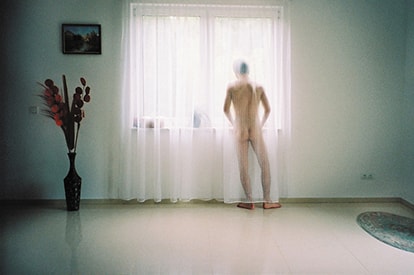
Julia Krywicz
Przez swoją fotografię chciałam ukazać to, czego często wstydzimy się wobec siebie obnażyć: świadomość samych siebie i własnego ciała. Na zdjęciu starałam się uchwycić moment, kiedy człowiek jest sam na sam z sobą, jest takim, jakim jest.
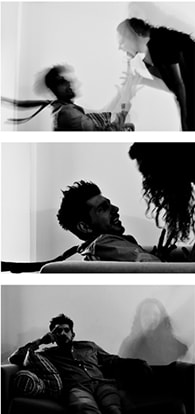
Marek Buczyński
Zaprojektowany przez mnie plakat składa się z trzech zdjęć, opowiadających historię młodej pary, którą targają różne uczucia, w tej pracy negatywne. Na pierwszym planie widać złość i kłótnię, która w konsekwencji prowadzi do agresji, ta zaś do wstydu i żalu, jaki po niej, niestety, pozostaje.

Anna Rubinkiewicz
Zastanawiając się nad pytaniem, co w dzisiejszych czasach możemy określić jako tabu i co może u nas wywołać wstyd, kiedy granice między przyzwoitością a jej brakiem coraz bardziej się zacierają, gdzie cnota zaczyna być przyczyną pewnego rodzaju odrzucenia przez społeczeństwo, a rozwiązłość powodem do dumy, doszłam do bardzo prostych wniosków, że to, co kiedyś było tabu i przyczyną wstydu, stało się normalne i akceptowane. Przyzwyczailiśmy się. Natomiast rzeczy, przed którymi wówczas zakrywano oczy, zaczęły być mile widziane.
W swojej fotograficznej odpowiedzi na to pytanie chcę też zwrócić uwagę na miejsce człowieka wierzącego we współczesnym społeczeństwie. Wielu ludzi, szczególnie młodych teraz wstydzi się tego, że wierzą. To jest teraz tabu.

Mateusz Żułkowski
Podglądanie i inwigilacja są, w powszechnej opinii, tematem tabu i wstydu. Mimo te zjawiska są coraz bardziej powszechne. Współczesne komunikatory (telefonia komórkowa, Internet, tabloidy) oraz powszechność urządzeń rejestrujących ułatwiają realizację takich zamierzeń i kontrolę prywatności jednostki. Dziurka od klucza kojarzy się z naruszeniem prywatności i nasuwa wszystkim jednoznacznie negatywne skojarzenia.
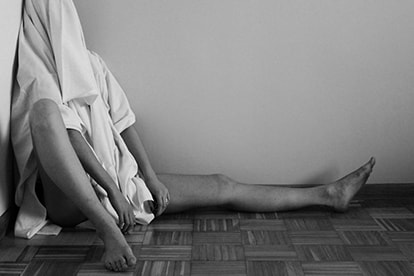
Ilona Piwońska
Przez swoje fotografie chcę ukazać stan emocjonalny osoby, doświadczającej przemocy cielesnej. Na zdjęciach nie ma strachu. Jest obojętność. Najgorsze z uczuć. Pogodzenie się z sytuacją, zamknięcie we własnym wnętrzu, cisza… milczenie.
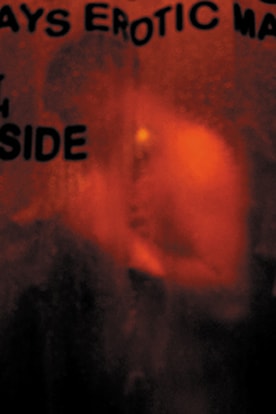
Aleksandra Miksiewicz
Moim zdaniem tabu i wstyd to dwa zjawiska unicestwione w XXI wieku.

Marlena Rytel
W swoich fotografiach pokazuję brak reakcji i pogodzenie się z często nieprzyjemnymi sytuacjami, jakimi są przemoc, wykorzystywanie czy nadużycie, a wewnętrzny krzyk i cierpienie ukryte są pod skorupą neutralności.
